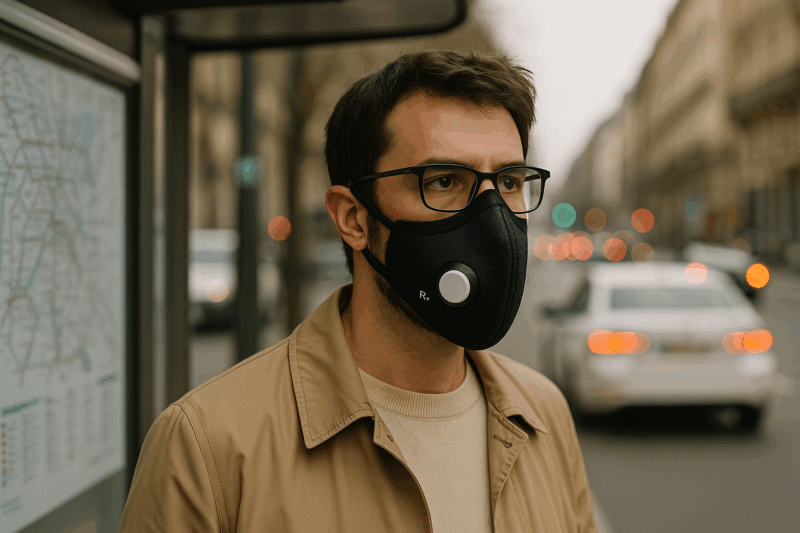
Introduction: The Price Puzzle Patients Face
In more than a decade of writing about healthcare, I’ve sat in kitchens and clinics with everyday people who all shared the same frustration: why does staying healthy have to cost so much?
I once met a single mother in Ohio juggling three prescriptions for her child’s asthma. She showed me the receipts: $68 at one pharmacy, $42 at another, and nearly $90 at a third – all for the exact same inhaler. Another interviewee, a retired bus driver, confessed he had quietly started cutting pills in half to stretch out his monthly supply of heart medication.
These weren’t isolated stories. They were proof of a bigger, uncomfortable truth: the cost of medicine isn’t just about the medicine. It’s about where you buy it, who’s selling it, and whether you have the tools to compare prices.
That’s why multi-supplier marketplaces such as Medicine Mart have become so important. They give patients a chance to see, side by side, what different verified suppliers are charging – and that simple transparency can mean the difference between sticking to treatment or skipping it.
1. The Hidden Drivers of Medicine Price Differences
When people ask why prices vary so much, the short answer is: “because they can.” But the long answer matters, because it helps patients understand what they’re really paying for.
● Brand vs. Generic: A brand-name drug carries years of development, marketing, and patent protection. Once the patent expires, generics enter the market. They’re equally effective but cost dramatically less – often 70–80% lower.
● Pack Size Economics: A 10-tablet box might look cheaper at checkout, but per tablet it can be significantly more expensive than a 30- or 90-tablet pack. Suppliers know smaller packs feel more affordable upfront, even if they aren’t in the long run.
● Supplier Overheads: A neighborhood pharmacy paying high rent or running a 24-hour staff has different costs than a lean online distributor. Those overheads get baked into the sticker price.
● Stock Cycles: Scarcity drives prices up. When a medicine is in short supply, markups climb. Conversely, oversupply or competition drives prices down.
● Geography: Patients in New York may pay twice as much as patients in Mumbai or Berlin, simply due to regulatory differences and regional purchasing power.
These factors don’t just explain why prices vary. They explain why patients often feel powerless in the face of medical bills.
2. Why Transparency Matters
In 2022, Health Affairs reported that more than 20% of American patients admitted to skipping doses or splitting pills to save money. That’s not a budgeting tactic – it’s a public health crisis.
When patients can’t predict or control their medication costs, adherence suffers. Transparency solves that problem. With clear visibility, patients can:
● Choose safe, affordable alternatives such as approved generics. ● Plan long-term budgets instead of being blindsided at the pharmacy counter.
● Stick to treatment plans, which improves outcomes and reduces costly complications.
Price transparency isn’t just an economic issue. It’s a health equity issue.
3. How Multi-Supplier Marketplaces Work
Traditional pharmacies are like single-ticket counters: you see the price they set, take it or leave it. Online marketplaces, by contrast, operate like travel sites. Multiple verified suppliers can list the same product, allowing patients to compare options without hopping between ten different websites.
The result? Competition. And competition drives prices closer to fairness.
Imagine shopping for Metformin, a common diabetes drug. On one supplier’s site, it’s $36 for a month’s supply. On another, it’s $28. On a marketplace, you’d see both – plus maybe a third supplier offering $25 with a bulk-pack discount.
Without that transparency, the $36 supplier might have gotten your order by default. With it, you can save – safely.
4. The Economics of Competition
Economists call this price discovery. It’s the process of letting the market – not any single seller – determine the fair value of a product.
● Supplier A lists at $30
● Supplier B counters at $27
● Supplier C drops to $25
Now the patient has power. The downward pressure makes it hard for any one supplier to inflate prices unchecked.
It’s the same principle that transformed airline bookings. Nobody today books flights without checking a comparison site. Why should medicines be different?
5. Access to Generics Expands
Generics are one of the most reliable ways to cut costs – but not all pharmacies stock them, especially if they profit more from pushing brand names.
Marketplaces expand choice by allowing multiple suppliers to list both brand-name and generic versions. That means patients with chronic conditions – hypertension, diabetes, chronic pain – are far more likely to find a safe, approved, lower-cost alternative without having to guess.
Choice equals affordability.
6. Case Study: Tapentadol – Brand Name vs. Generic
To see how this plays out, let’s look at Tapentadol, a prescription analgesic for moderate to severe pain.
● Brand-name version: Nucynta®, often priced at $450–550 per month for a standard 100 mg daily dose.
● Generic version: Tapentadol, sold under names like Tapaday (200 mg), frequently available for $150–200 per month.
Annual Cost Comparison
Type Approx. Monthly Cost Annual Cost
Brand-name (Nucynta®) $500 $6,000
Generic (Tapaday) $180 $2,160
Potential Savings: ~$3,800 per year.
For patients managing chronic pain, that’s not just a number. That’s money that could cover physiotherapy, doctor visits, or simply groceries.

Important note: Tapentadol is a controlled medicine. Any switch from brand to generic should be done only under the supervision of a licensed physician.
7. Why Savings Matter Beyond the Wallet
Lower costs translate directly into better health.
● Adherence improves: Patients are more likely to take medicines consistently when they’re affordable.
● Complications decrease: Skipped doses often lead to hospitalizations that cost far more.
● Stress reduces: Financial stability means patients aren’t forced to choose between filling a prescription and paying rent.
Affordability isn’t just about economics. It’s about dignity, safety, and peace of mind.
8. Practical Tips for Patients
Here are five lessons patients can use right away:
1. Compare by pack size. Larger packs often cost less per tablet.
2. Ask about generics. Doctors and pharmacists can confirm equivalence.
3. Look beyond sticker price. Check shipping fees, supplier ratings, and return policies.
4. Consider bulk refills. For chronic medications, 90-day packs often save more in the long run.
5. Watch for promotions. Seasonal or supplier-specific discounts add up.
Knowledge, paired with transparency, turns patients from passive payers into informed decision-makers.
9. Are Multi-Supplier Marketplaces the Future? Traditional pharmacies solved convenience. Marketplaces solve transparency.
Patients no longer have to guess what a medicine should cost. With multiple suppliers, verified safety checks, and access to generics, marketplaces are rapidly becoming the default choice for affordability-conscious patients worldwide.
The future of healthcare isn’t just about breakthrough drugs. It’s about making sure the drugs we already have are accessible, safe, and fairly priced.
Conclusion
The rising cost of medicines doesn’t need to be a permanent barrier to care. By leveraging the power of competition, transparency, and generics, multi-supplier platforms give patients a fair shot at both health and financial stability.
When patients can afford their treatment, they’re far more likely to follow it – and that’s where better health outcomes begin.
FAQs
Q1: Do more suppliers always guarantee the lowest price?
Not always – but competition ensures prices stay closer to fair than in single-supplier models.
Q2: Are generics really as effective as brand names?
Yes. Approved generics must meet strict FDA/EMA bioequivalence standards.
Q3: How do I know if an online supplier is safe?
Verified platforms check licenses, authenticity, and storage compliance before listing suppliers.
Q4: Can I buy in bulk?
Yes, but always confirm with your physician before adjusting supply length.
Q5: What if a supplier runs out of stock?
On a marketplace, another verified supplier usually carries the same medicine – reducing the risk of treatment interruption.












